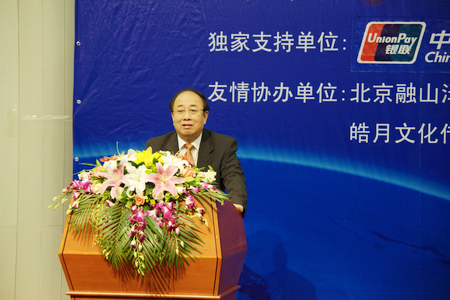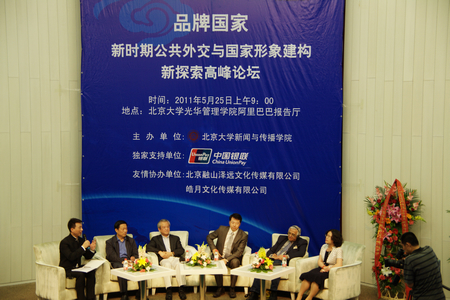Peking University, May 30, 2011: As part of nation branding, public diplomacy and national image building are a joint responsibility shared by social entities including the government, the mass media and enterprises. Participants reached this consensus at the Forum “New Exploration of Public Diplomacy and National Image Building”.
The Forum was held at Peking University on May 25. With a focus on public diplomacy and national image building, forum participants mainly discussed the roles the government, the media and enterprises should play in this process. They agreed that international communication was a national strategy that required coordination and collaboration among various diffusion subjects.
Professor Shao Huaze, Dean of the School of Journalism and Communication, said, Peking University had classes on international communication as early as in 1994. After the establishment of the School of Journalism and Communication in 2001, a systematic project for cultivating talents in international communication and cross-cultural exchange was initiated. Many graduates have been working and playing important roles in the field. The faculties also actively participate in national research and undertake a variety of commissioned projects, offering advice and suggestions on national overseas communication. They have formed a close cooperative relationship with governments and the media.

Professor Zhao Qizheng at his speech
Professor Zhao Qizheng, director of the CPPCC’s Foreign Affairs Committee, former Minister of State Council Information Office, and dean of the School of Journalism at Renmin University of China made a keynote speech titled "Tell the world about China". China will stick to the path of "peaceful rise", which is most beneficial to both China and the world. As the advocator and promoter of China’s public diplomacy, he pointed out that the public were not only the audience, but also participants of public diplomacy. Only by introducing China’s national conditions to the foreign public can we receive their understanding and support and build an ideal national image of China.
Xu Luode, president of China Unionpay elaborated on relations between enterprise brand development and national branding strategy. He said: “The development of the country gave birth to the brand of China Unionpay and provides a foundation for the globalization of China Unionpay. And the development of China Unionpay also promotes that of national branding.”
Professor Cheng Manli, deputy dean of the School of Journalism and Communication and also the emcee of the Forum pointed out that nation branding was not a new concept. It was put forward by Simon Anholt in 1996 when the UK wanted to change from its traditional national image to an innovative one. Many countries and international institutions, such as Canada, Germany, Australia, South Africa, Thailand, the European Union, and African Union, used this concept in combination with soft power building to highlight their unique features.

The interactive session
In the interactive session many guest speakers participated in the discussion to express their views. Guo Wei, chief of Reporting Bureau of the State Council Information Office stressed the important role communication played in national image building. Former Indian Ambassador Kishan Rana shared his ideas on "How to introduce India". Deputy Editor-in-chief of Xinhua News Agency Outlook Weekly elucidated the key factors in constructing national image: authenticity, characteristics, focus and skills.
As one of the activities celebrating the 10th anniversary of the School of Journalism and Communication, the Forum invited many guests from the government, the media, institutions of higher education and enterprises including the State Council Information Office, CCTV, Tsinghua University, the State University of New York and China Unionpay.
Written by: Chen Wei
Edited by: Zhang Chunlan
Source: PKU News (Chinese)